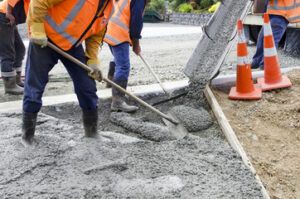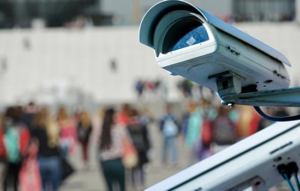Concrete is everywhere in our daily lives. It’s sidewalks, signage, parking structures, and even homes and buildings.

Repairing concrete extends its lifespan, reducing the need for expensive replacements. Concrete Repair Morgantown WV also addresses safety hazards and pest infestations. Successful repair involves a condition evaluation, determination of the causes of deterioration, and selection of appropriate repair methods and materials.
Concrete surfaces can experience a range of damage that may necessitate repair. Weathering, heavy foot traffic, and vehicle impact can all take their toll on concrete surfaces over time. Repairing these surfaces is a way to protect the integrity of the concrete structure and restore its ability to perform its intended function.
Surface repairs are typically used for minor damage, including cracks and spalling (flaking or peeling). This type of repair involves filling in the damaged area with a patching material to restore the concrete to its original condition.
To ensure the longevity of a surface repair, it is important to use a high-quality product. The ideal repair material is durable, versatile, and can be used in a variety of conditions. Look for products that are formulated to withstand the elements and provide excellent adhesion to existing concrete. They should also be able to withstand drying shrinkage, freezing/thawing cycles, and exposure to chemicals.
When selecting a repair material, it is also important to consider the type of damage and the environment in which it will be used. For example, a product that is designed for industrial and commercial floors should be able to withstand the rigorous demands of vehicles and foot traffic. It should also be effective in temperatures as low as 0°F.
It is crucial to regularly assess the condition of concrete surfaces and address any damage promptly. This will help to minimize the need for costly replacements in the future.
In addition to extending the lifespan of concrete structures, regular maintenance can also improve their aesthetics and increase safety. Cracks and other damage can create trip and fall hazards, which can lead to serious injuries. Repairing these issues as soon as they arise can prevent accidents and injuries.
A well-maintained concrete surface is an essential part of any building or structure. It provides a safe and functional environment for employees and customers alike, and it can also enhance the aesthetics of a space. However, like any other construction material, concrete will eventually wear out over time for a variety of reasons, including poor installation, ground movement, and aging.
Structural Repair
Concrete structures are subject to a variety of stresses that can cause deterioration. When this deterioration becomes structural in nature, it can result in failure of the structure. Identifying and addressing these problems promptly can save money and prevent future damage.
The old dictum “prevention is better than cure” applies to concrete structures as well. It is important to periodically evaluate the condition of a concrete structure, determine the causes of the deterioration and distress, and select the appropriate repair methods and materials. This requires a thorough condition assessment that may include visual inspection, nondestructive testing and chemical analysis of concrete samples, review of maintenance records, a structural analysis of the current state of the structure, and destructive and non-destructive testing of the concrete and steel.
Surface damage is typically caused by water penetration, which corrodes the steel reinforcing in the concrete and eventually causes it to weaken. The use of concrete sealants can help minimize the penetration of moisture and prevent future problems.
Structural damage can also occur due to construction errors and improper installation of reinforcement. Improper steel bar spacing, aggregates that are too large or small and larger slab spans can all contribute to the deterioration of concrete.
In addition, stress from seismic events can lead to swaying, deflection and movement of concrete structures. The use of expansion joints can alleviate some of this stress.
If a structure is experiencing serious deterioration or distress, it should be inspected by an experienced engineer. The engineer can determine the root cause of the problem and recommend the correct repair method. Major repairs should only be completed by a professional contractor who is licensed and insured. This is especially true for larger projects or repair work that involves working in high places. The right contractor can save you time and money, and can offer a warranty and insurance to protect you from any damage that might occur during the repair process.
Repairing Cracks
If your concrete structure has a wide crack, you should repair it as soon as possible to minimize differential shrinkage and the consequent debonding of the repair material. The surface of the crack should be cleaned thoroughly. This can be done using a wire brush or vacuum cleaner, but it should also include chiseling the crack and removing any loose or crumbling concrete from the surface.
You should then allow the area to dry for a few hours before proceeding with your repairs. Thorough cleaning will help ensure that your repair material adheres well to the existing concrete, and it is a good idea to put down a tarp beneath your work area to reduce dust. If the crack is deep, you should consider drilling and grouting it. If it is very narrow, you might use the stitching method. Stitching is a technique that involves drilling holes along the length of the crack and then filling them with grout, which will act as a plug to stop further movement and leakage.
For most cracks, you will need a high quality concrete patching product. Vinyl concrete patch is one of the most common products for this type of repair, and it can be used to fill voids up to 1/8 ” wide. You should mix the patching product according to its instructions, and only apply a small amount at a time. Once it dries, you should trowel it out with a soft-edged tool.
There are many other repair products available, including dry pack mortar that uses a mixture of cement and sand with little or no water to create a concrete like consistency that you can force and hammer into place to get full compaction. Latex-based products are another option, and these are typically best suited for cracks that are 3/8″ to 1/2″ wide. Polyurethane-based products are more difficult to work with but they offer superior performance for repairs that require greater durability and flexibility.
When choosing a repair material, you should think about its physical properties as well as its durability characteristics. Drying shrinkage, modulus of elasticity, permeability and freeze-thaw durability are all important. You should also make sure that your chosen product is easy to apply, has a long shelf life and can be applied with a wide variety of tools.
Repairing Leaks
Like everything else in the world, concrete shows signs of wear and age. When these signs aren’t repaired, it can lead to serious problems including water leaks and structural damage. Fortunately, most concrete repair projects aren’t as difficult as they might seem at first glance. Using the right products and techniques, even DIYers can handle most concrete repairs.
Before any concrete crack repair or slab leak repair, it’s crucial to make sure that the area is clean and free of debris. This will help ensure that the new patching material adheres to the existing surface, avoiding any future cracks or leaks. For surface repairs, you can use a power grinder such as the Onfloor 16 to remove loose or damaged concrete. This step is especially important for surface cracks and voids, as these will need to be filled with a hydraulic cement product to prevent future water infiltration.
A good quality hydraulic cement will not only fill in the crack, it will also help to strengthen the surrounding concrete structure. For example, the Kryton krystol plug uses crystalline technology that reacts with any water ingress, creating an insoluble mass that seals cracks and pores. This is the best way to stop any further leaks and water infiltration, preventing future damage.
When repairing a slab leak, it’s best to hire a professional. They have the expertise to locate the source of the leak, whether it’s in plumbing lines or in the slab itself. They can also use a variety of inspection methods, such as sonic, pressure, electromagnetic, and gas tracer detection tools.
In addition to using high-quality repair materials, a professional contractor will also ensure that the area is properly prepared before beginning the project. This will include removing any loose or damaged concrete, as well as cleaning and dusting off the area. They’ll then apply a primer to ensure that the new repair materials will adhere to the existing concrete.
When hiring a concrete repair contractor, it’s essential to ask about their experience and training. A reputable concrete repair contractor will have a strong history of working on projects similar to yours, and will have the proper safety equipment and procedures in place. They should also offer a warranty on their work and have insurance in case of any accidents or injuries that might occur during the process.
